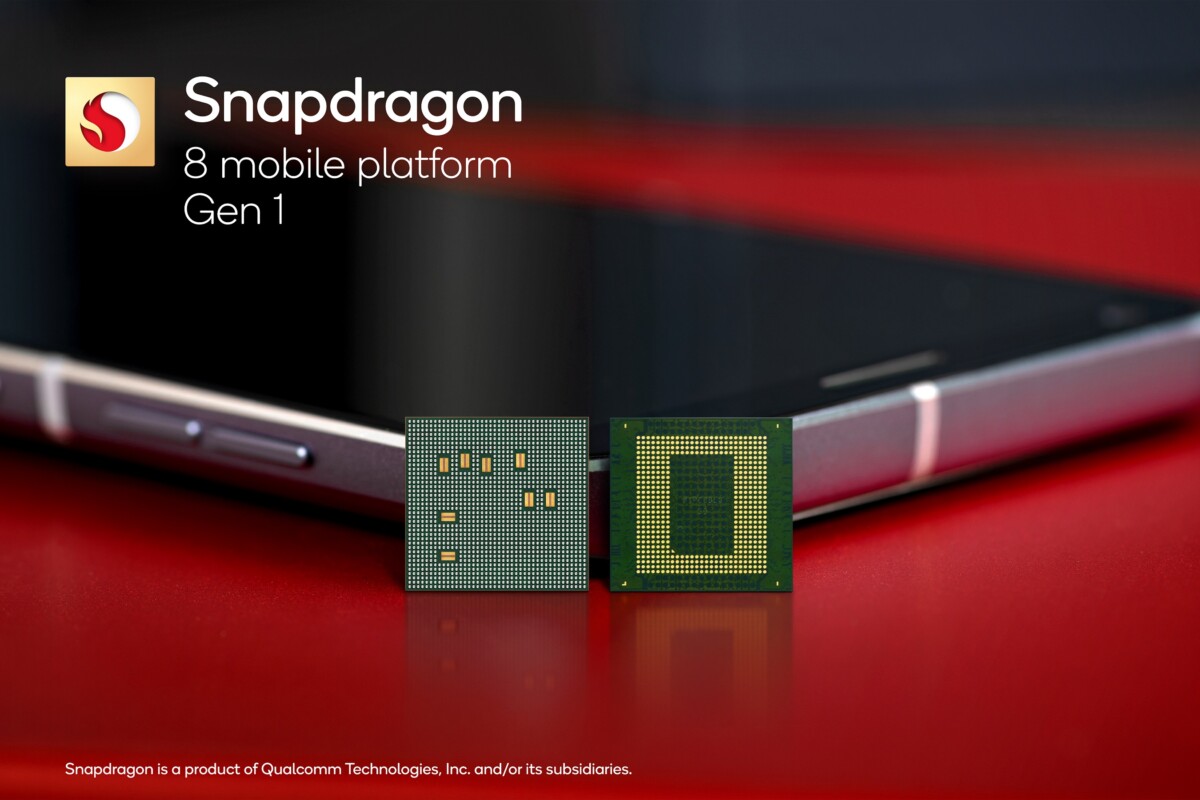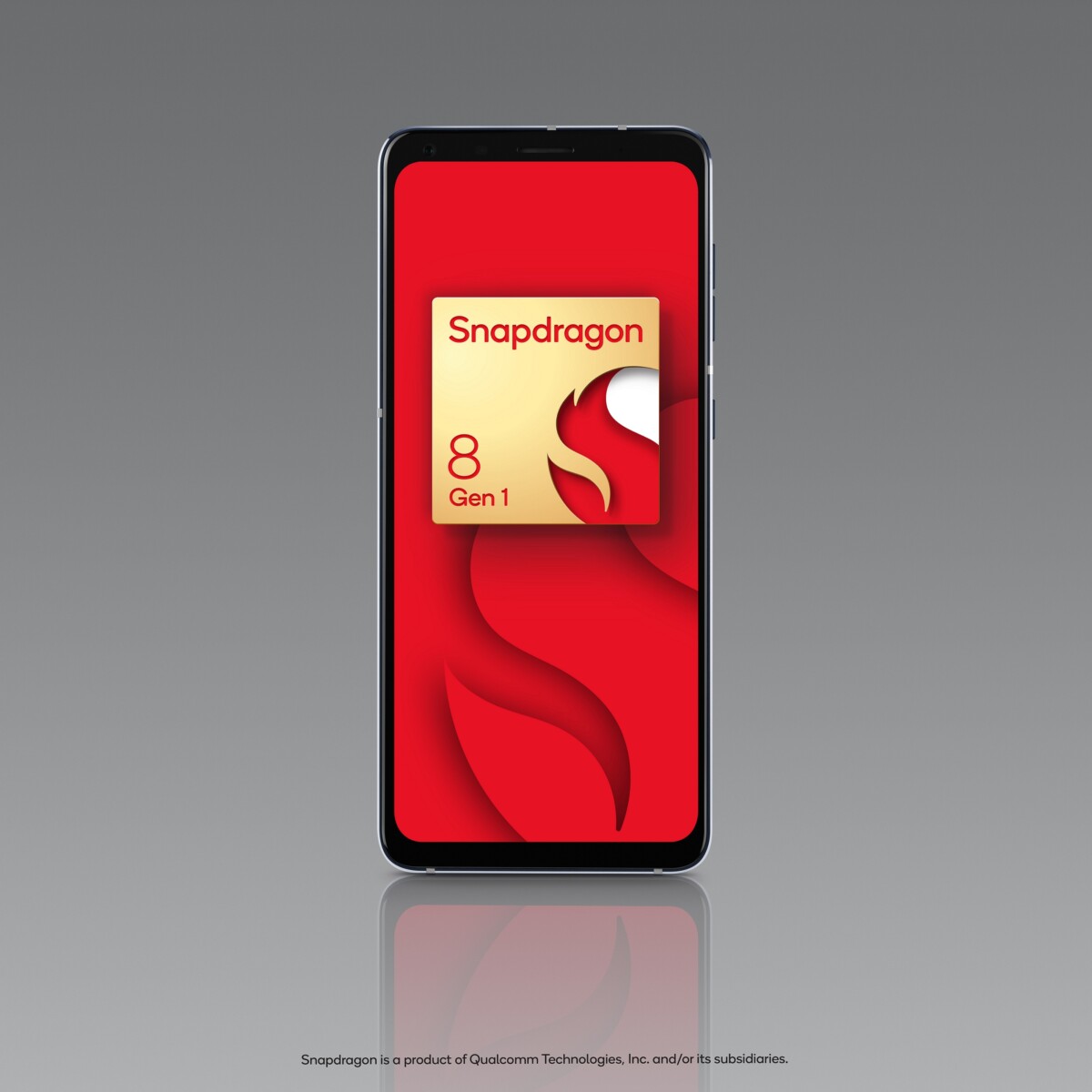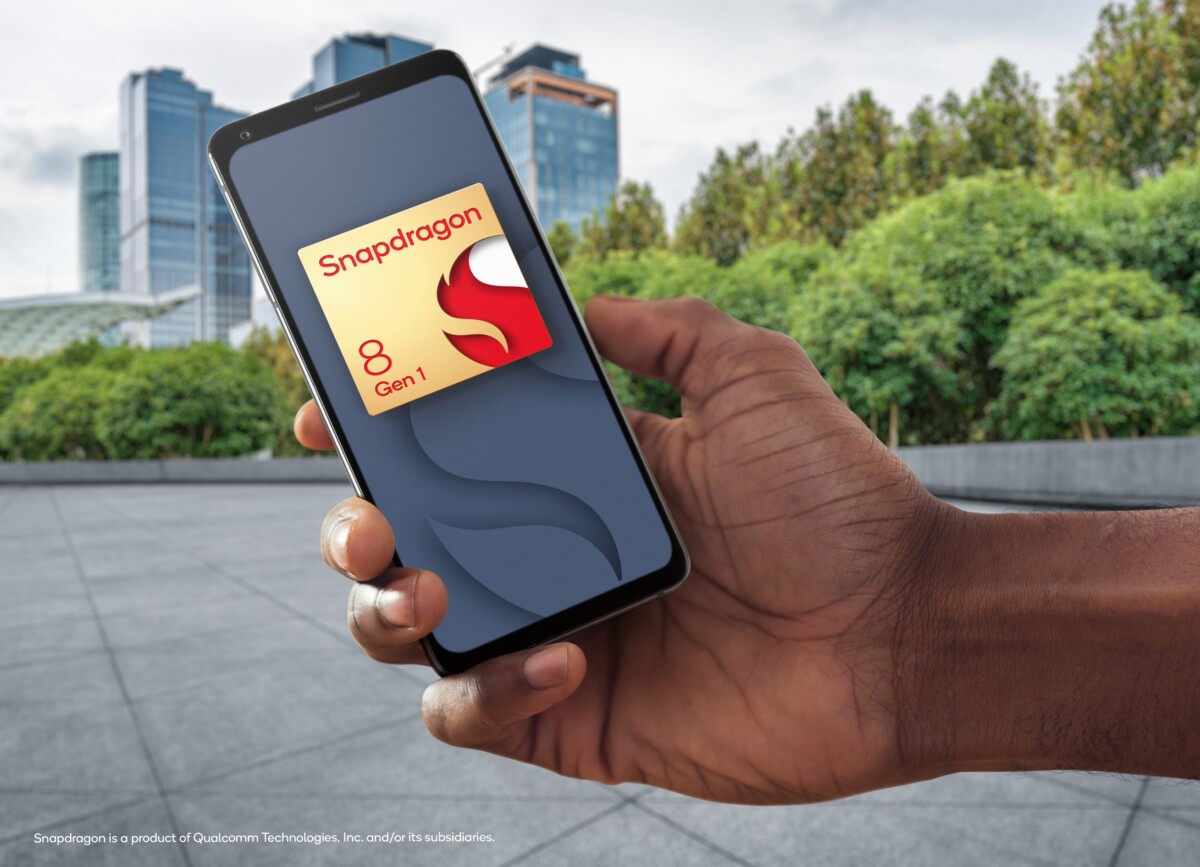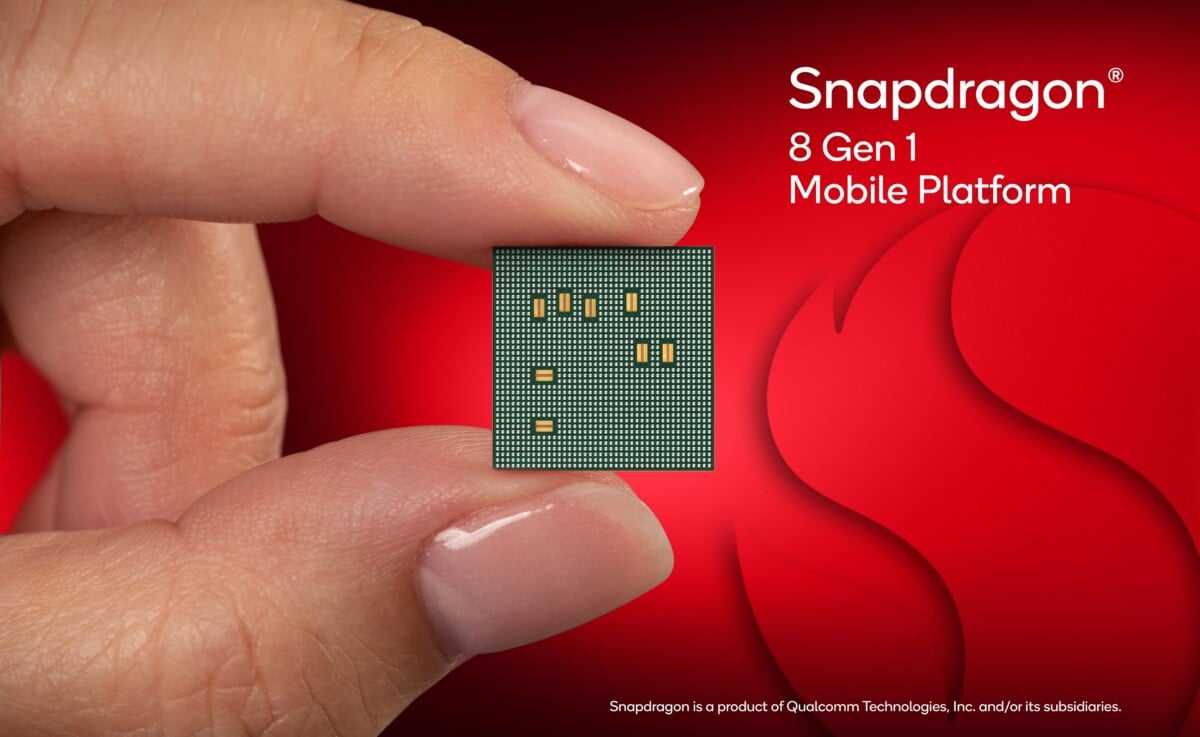For its name change, the Snapdragon 8 Gen 1 insists less on the power of its processor and its GPU than on its capabilities in AI, photos and the speed offered in 5G. Is it a paid bet?
In 2021, Qualcomm flew over the industry with its Snapdragon 888, a SoC which has managed to outperform all its competitors in all the benchmarks we have conducted. At the end of 2020, when it was announced, we had so little doubt that it was going to set an industry standard that we were talking about ” new bases for smartphones “. This year promises to be very different. MediaTek presented the Dimensity 9000, an impressive SoC that could well be a spoiler.
The dragon’s response to the shepherdess
You will understand, Qualcomm’s response was therefore more than expected. Here is the Snapdragon 8 Gen 1. As announced, the American firm has decided to break its three-digit system, we draw a line on the Snapdragon 8XX and we look ahead.
First curiosity, the firm does not communicate that much on the gains of its processor, yet equipped with a latest generation Cortex-X2 core. She prefers to focus on three key areas: AI, photo and the connectivity.
The 4 nm is also crossed
For our part, we are still going to dwell a bit on the processor and GPU of this SoC before addressing these three points, because these are probably the most telling components.
Let’s start by talking about the finesse of engraving. Yes, the Snapdragon 8 Gen 1 also performs well at 4nm, joining the Dimensity 9000 in this very closed club. Indeed, Apple still offers an A15 Bionic in 5 nm, which is also very efficient.
A performance gain is precisely the promise that generally accompanies a reduction in engraving fineness. And given the figures communicated by Qualcomm, we can see it here.
The Arm Cortex-2 mega-core is clocked at 2.995 GHz, and could peak up to 3 GHz. A nice improvement over the 2.84 GHz of the Cortex-X1, but not enough to match that of the Dimensity 9000 which reaches 3.05 GHz.
Let us specify here that the pure power of a chip intended for smartphones is far from being the most important data, because a powerful but not very economical chip which would empty the battery in a few hours will not interest many people. However, on paper, MediaTek seems to have managed to offer a chip capable of equaling, or even exceeding that of Qualcomm. It’s not nothing.
Sound quality worthy of a console
For the graphics part, the GPU Adreno for its part, has seen its architecture redesigned. This should allow it a 30% jump in graphics processing and 25% energy efficiency. More interestingly, it integrates the support ofUnreal Engine 5 and its stunning graphics, as well as an Adreno Frame Motion engine, supposed to help increase the number of frames per second displayed.
We are far from the promises of Ray tracing of the partnership between Samsung and AMD, but the stability of the refresh rate above 30 FPS is still complicated on some games.
Especially since it is not only the graphics that allow you to dive into a video game, the sound counts for a lot too. The Snapdragon 8 Gen 1 incorporates Audiokinetic technology for this. The promise is simple: more immersive sound and console-worthy sound quality.
AI makes a big leap
The area that has seen the most improvement this year is the chip in charge of AI calculations. Qualcomm presents the 7th generation of its processor Hexagon dedicated to machine learning. This doubles its computing speed and memory capacity. Enough to titillate the Google Tensor of Pixel 6, but also undoubtedly the new chip from MediaTek. This chip will be helped by a 3rd generation of Sensing Hub, a very energy efficient chip also dedicated to AI calculations.
It’s not just the size that matters, but you can see the importance of AI just by looking at the layout of the SoC. The Hexagon and the Sensing Hub take up much more space than the CPU, for example.
If the concrete effects of this omnipotence are difficult to apprehend for the moment, Qualcomm presented a host of examples during its Tech Summit. Starting with functionality Hugging Face.
This will make it possible, for example, to analyze your notifications and group them “intelligently”. If you are used to using the control + F action to search for a specific word in a text, you will now be able to type a keyword such as “color” and the Hexagon will find all the passages closely or closely related. away to this theme. More impressive still, Qualcomm promises thate “if your boss asks you to analyze 100 documents, you can scan them instantly to know the general tone” so as to save reading time.
The photo should also benefit from this gain in speed, since the algorithmic processing of the images draws its power in part from the machine learning. We can expect an improvement in bokeh and color management. The chip will also be able to recognize 300 parts of the face to better identify the features and highlight them.
A feature makes it possible to create a panoramic rendering of 140 ° by merging two images taken by two different sensors. The advantage compared to a classic panoramic or an ultra wide angle is simple: there is no distortion. In addition, if you have an ultra wide angle of 120 °, you will be able to overcome this technical limitation thanks to the AI.
The Sensing Hub has two interesting applications. The first is to spot sounds to trigger routines. Qualcomm imagines, for example, an alarm clock that goes off when a baby cries or an automatic call for help in the event of a road accident. Another utility in video games or videoconferencing: the Sensing Hub will help reduce howling, that unpleasant sound that can appear when two people use a microphone next to each other. We also saw it in demo and it’s quite impressive.
Last interesting application: your phone will be able to give you feedback on your mood and your sanity just by analyzing the way you speak. Qualcomm even talks about an ability to detect a Covid infection. To have…
The dance of the numbers in photo
Let’s continue on Photo, a very important criterion to stand out in the high-end market. We find on this SoC the triple ISP system presented with the Snapdragon 888, but this one sees its capacities considerably improved. The teams behind the Snapdragon are racking up the numbers.
The Snapdragon 888 could handle up to 14 bits, the S8 Gen 1 goes to 18 bits. Enough to capture 4000 times more data than its predecessor, all at a speed of 3.2 Gigapixels per second, against 2.7 last year. On the other hand, we are very far from the 9 Gigapixels promised by the Dimensity 9000.
Once integrated into a smartphone, this new ISP will allow the integration of sensors that can reach up to 200 megapixels (Samsung is also working on a copy). Here too, we could point out that MediaTek is far with its capacity of 320 megapixels, but Qualcomm seems closer to market expectations with 200 megapixels.
Your device will also be able to take three photos simultaneously with three sensors (a wide-angle, an ultra-wide-angle and a telephoto lens for example) in 36 megapixels, against 28 for the older generation. The ISP of the Dimensity 9000, with its closet of numbers, tops out at 32 megapixels.
Other advantages of the new ISP: it is capable of filming in 8K HDR, where the previous one stopped at a definition in 4K HDR. While filming, the SoC can also take 64-megapixel snapshots.
In burst mode, the Snapdragon 8 Gen 1 can reach 240 frames at 12 megapixels per second. Finally, if 2021 was certainly marked by the impressive night mode of the Google pixel 6, the Snapdragon 8 Gen 1 could raise the bar even further. It will indeed be able to merge 30 images captured in very low light. Snapdragon estimates that smartphones equipped with this new SoC will have a night mode five times more efficient. We can not wait to see it.
10 Gpbs in 5G
Like performance, chip connectivity and networking capabilities are so good today that we tend to pay less attention to them. Qualcomm still had its share of announcements in this area.
The San Diego firm presented its new 5G modem, the Snapdragon X65, which takes over from the X60. This new generation allows Qualcomm to display two firsts on its hunting board: a speed of 10 Gigabit in 5G and “The first 3GPP version 16 modem”, the latest 5G standard. MediaTek also announced the first 3GPP modem a few weeks ago, but let’s move on.
Beyond the numbers, this new modem embeds a very interesting feature, which aims to prevent attacks and scams issued by fake 4G, 5G or even 2G stations. For example, when you receive a fake message from your bank or from your CPF account. Inside the Snapdragon X65 modem itself, a system will be able to detect whether a transmitting station is dangerous or not and block it. Carrying out this task directly in the modem has one more advantage: it requires little power from the phone and therefore saves its battery.
To support it, we will rely on the FastConnect 6900 chip, responsible for Wi-Fi and Bluetooth. It is the same model as on the Snapdragon 888. We still have Wi-Fi 6E with a theoretical speed of 3.6 Gbps. We also keep Bluetooth 5.2, where MediaTek already announces 5.3. Two important additions are still there: the arrival of the aptX Lossless codec, which promises CD quality on its wireless headphones and the appearance of Bluetooth LE.
This article was written as part of a press trip organized by Qualcomm.
To follow us, we invite you to download our Android and iOS app. You will be able to read our articles, files, and watch our latest YouTube videos.






Download Bud Spencer Blues Explosion – Vivi muori blues ripeti Album Mp3 Zip
Download Toosii – Platinum Heart (Deluxe) Album Mp3 Zip
Download 8P-SB – 8p-Sb.Com Album Mp3 Zip
Download IU – IU 5th Album ‘LILAC’ Album Mp3 Zip
Download Anthony Lazaro – Rock Paper Scissors Album Mp3 Zip
Download Clarence Carter – Greatest Hits – Clarence Carter Album Mp3 Zip
Download El Sebas de la Calle – Mi Verdad Album Mp3 Zip
Download Queen – Hungarian Rhapsody (Live In Budapest / 1986) Album Mp3 Zip
Download Dan Haseltine & Matthew S. Nelson – The Chosen: Season One (Original Series Soundtrack) Album Mp3 Zip
Download Richard & Linda Thompson – Hard Luck Stories (1972 – 1982) Album Mp3 Zip
Download Various Artists – I Love 80s: Ministry of Sound Album Mp3 Zip
Download Eryn Allen Kane – Aviary: Act 1 – EP Album Mp3 Zip
Download Various Artists – Serious Beats 94 Album Mp3 Zip
Download Liam Gallagher – Why Me? Why Not. Album Mp3 Zip
Download Various Artists – TechnoBase.FM, Vol. 21 Album Mp3 Zip
Download ENHYPEN – Border : Day One – EP Album Mp3 Zip
Download Los Tucanes de Tijuana – Corridos De Primera Plana Album Mp3 Zip
Download Drake Bell – The Lost Album Album Mp3 Zip
Download Various Artists – La tribu de Pierre Perret au café du canal Album Mp3 Zip
Download WILDES – Illuminate Ep Album Mp3 Zip
Download Various Artists – Rapunzel’s Tangled Adventure (Music from the TV Series) Album Mp3 Zip
Download Beatriz Luengo – Cuerpo y Alma Album Mp3 Zip
Download Bon Jovi – This House Is Not For Sale (Deluxe) Album Mp3 Zip
Download Melanie C – Version of Me (Deluxe Edition) Album Mp3 Zip
Download Various Artists – The Breeze Totally 80s Album Mp3 Zip